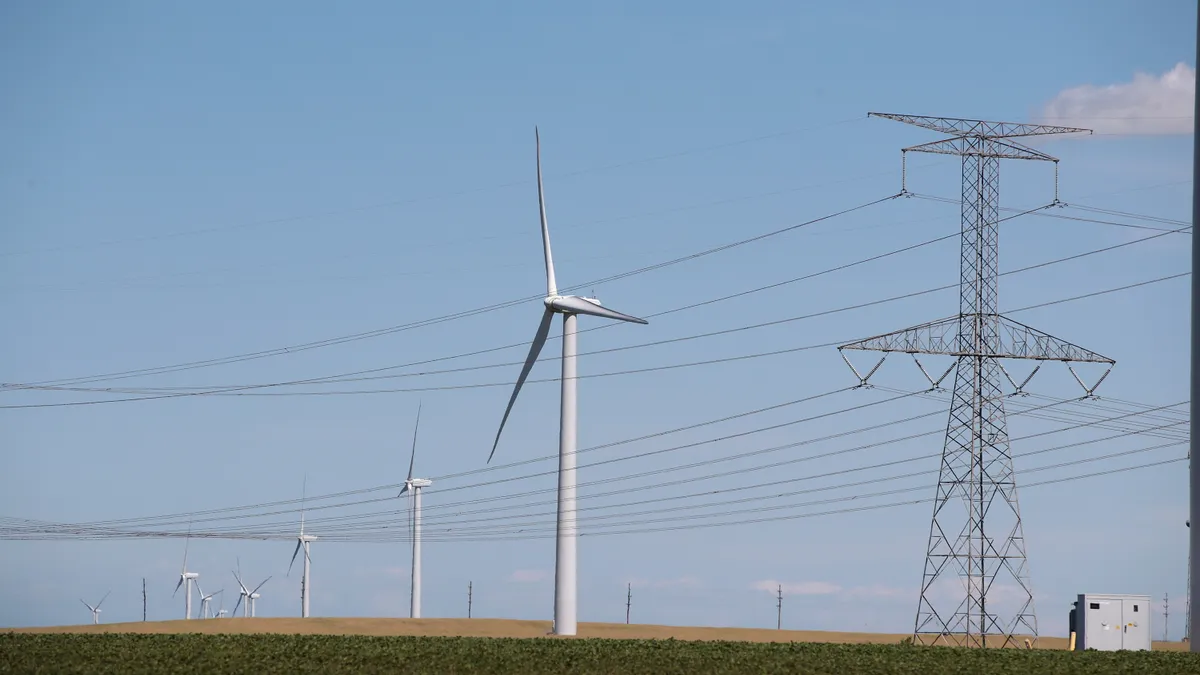Dive Brief:
- Industry leaders and executives at the National Clean Energy Week conference warned Tuesday that completely decarbonizing the U.S. electric grid will require continued advances in crucial areas like long-duration energy storage.
- Legislation before Congress, including the $1 trillion bipartisan infrastructure package, could provide a crucial boost to various clean energy and other technologies needed to get the electric grid over the last hump, according to executives on a Tuesday afternoon panel discussion at the conference.
- Public sector financing and tax credits are needed to both subsidize research into new energy technology and to ensure that new sectors can operate profitably in the U.S. against foreign competition, said Eric Dresselhuys, CEO of ESS, Inc., which builds long-duration batteries for energy storage in the utility sector.
Dive Insight:
Dresselhuys, CEO of ESS Tech and a member of Tuesday's panel discussing government policies needed to support breakthroughs in clean energy, estimated that current technology could get the utility sector to 90% of its goal of a carbon-free grid over the coming decades.
But the remaining 10% will depend on new advances in the sector, especially in the area of long-term energy storage, which is needed to fully capture the potential of variable, weather dependent renewable energy sources like wind and solar, he said.
"Long-duration storage will be key to making the transition happen," Dresselhuys said.
The ESS CEO said key to making this happen is a proposed, stand-alone tax credit for the energy storage sector. The tax credit is part of the $3.5 trillion, wide-ranging additional infrastructure package Democrats are pushing in Congress, though Dresselhuys said there is support among both Democrats and Republicans for a stand-alone measure focused solely on the tax credit.
Gerry Anderson, executive chair of DTE Energy and chair of the Edison Electric Institute, offered a more conservative estimate of 80% in how far current technology can take the utility sector in terms of decarbonization.
While solar and wind, combined with nuclear energy, hydro and natural gas, can get the industry most of the way, the last 20% will depend on the further development of emerging energy technologies like green hydrogen, carbon capture and sequestration and advanced nuclear reactors, he said.
With a boost from federal funding and policies, the utility sector should be ready to roll out these new energy sources in the 2030s, Anderson said.
As it stands now, the nation's utility companies already generate 40% of their power from non carbon-polluting sources like nuclear, wind, hydro and solar, he said.
Electrification of the transportation sector, now the country's largest carbon emitter, will also be crucial, Anderson said, pointing to the utility sector's support of initiatives like the rollout of charging stations across the country to support growing EV vehicle production and sales.
"We believe with the proper policies and technologies in place, a net zero future can be more than a goal – it needs to be," Anderson said. "Realistically, wind and solar and energy storage can get us much of the way there, and nuclear energy and natural gas will help us get there faster, but these technologies alone will not be enough."
While supportive of increased public research funding, Tom Dower, vice president for public policy at LanzaTech, which is developing carbon recycling technology, said he does not want to see the federal government "picking ...winners and losers" when it comes to new clean energy technologies.
Rather, Dower said the government should set goals for carbon reduction and then let companies compete.
"We are supportive of a tech neutral outcome" in which "the government is not picking specific winners and losers, but there are goals which are mostly about carbon reduction," Dower said.














